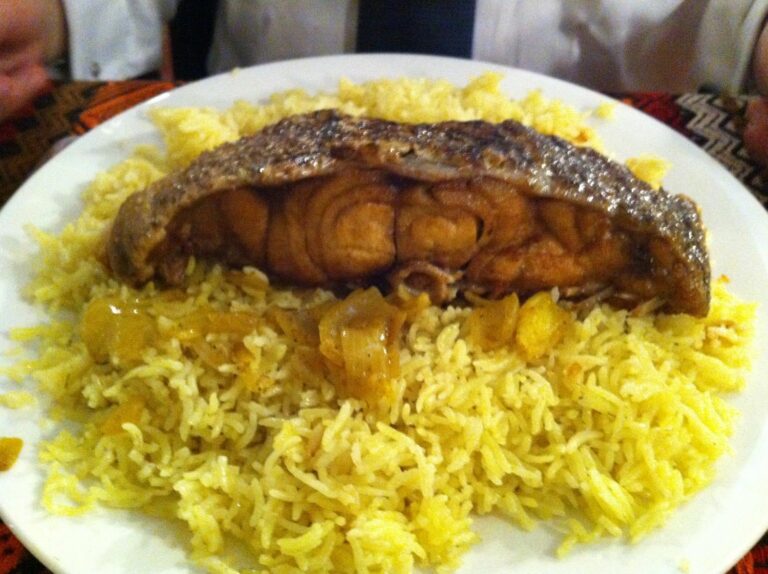Introduction: Kuwaiti cuisine and its cultural influences
Kuwaiti cuisine is a reflection of the region’s history and cultural diversity. The country’s location on the Persian Gulf, along with its proximity to Saudi Arabia and Iran, has shaped its cuisine over the centuries. Kuwaiti dishes are a mix of traditional Arab cuisine, Persian flavors, and Indian spices. In this article, we will explore the influence of neighboring countries on Kuwaiti cuisine.
Neighboring countries and their cuisine
Kuwait shares its borders with Saudi Arabia to the south and Iraq to the north. The Persian Gulf lies to the east, while Iran is situated across the water. Each of these neighboring countries has its unique cuisine, which has had a significant impact on Kuwaiti dishes. The use of spices, herbs, and cooking techniques in these countries has influenced the flavor profile of Kuwaiti cuisine.
The impact of Saudi Arabian cuisine on Kuwaiti dishes
Saudi Arabian cuisine has a significant influence on Kuwaiti cuisine. The two countries share a similar culinary heritage, with both cuisines featuring grilled meats, rice dishes, and sweet pastries. The use of spices like cinnamon, cardamom, and saffron is prevalent in both cuisines. However, Kuwaiti cuisine has adapted some Saudi Arabian dishes to suit local tastes. For example, the popular Kuwaiti dish, Machboos, is a rice dish flavored with saffron and spices, similar to Saudi Arabia’s Kabsa.
Influence of Persian cuisine on Kuwaiti cuisine
Persian cuisine has had a profound impact on Kuwaiti cuisine, given Iran’s proximity to Kuwait. Persian dishes like Ghormeh Sabzi, a stew made of herbs and lamb, and Chelo Kebab, a grilled meat dish, have become popular in Kuwait. The use of saffron, dill, and parsley in Kuwaiti dishes is a testament to Persian influences. Kuwaiti desserts like Qatayef, a stuffed pastry, are similar to Iranian sweets like Zoolbia and Bamieh.
The role of Indian and Pakistani cuisine in Kuwaiti cooking
Kuwait has a significant Indian and Pakistani expatriate population, which has contributed to the local cuisine. Indian spices like cumin, coriander, and turmeric are commonly used in Kuwaiti dishes like Biryani and Kebabs. The use of lentils and chickpeas in dishes like Dal and Chana Masala is also prevalent. Pakistani dishes like Haleem, a slow-cooked meat and lentil stew, and Kofta, meatballs in a rich tomato sauce, are also popular in Kuwaiti cuisine.
Conclusion: An eclectic blend of flavors in Kuwaiti cuisine
Kuwaiti cuisine is a reflection of the country’s cultural and historical influences. The impact of neighboring countries like Saudi Arabia, Iran, India, and Pakistan on Kuwaiti cuisine is evident in the use of spices, herbs, and cooking techniques. Kuwaiti cuisine is an eclectic blend of flavors that reflects the diversity of the population and the country’s location on the Persian Gulf.

